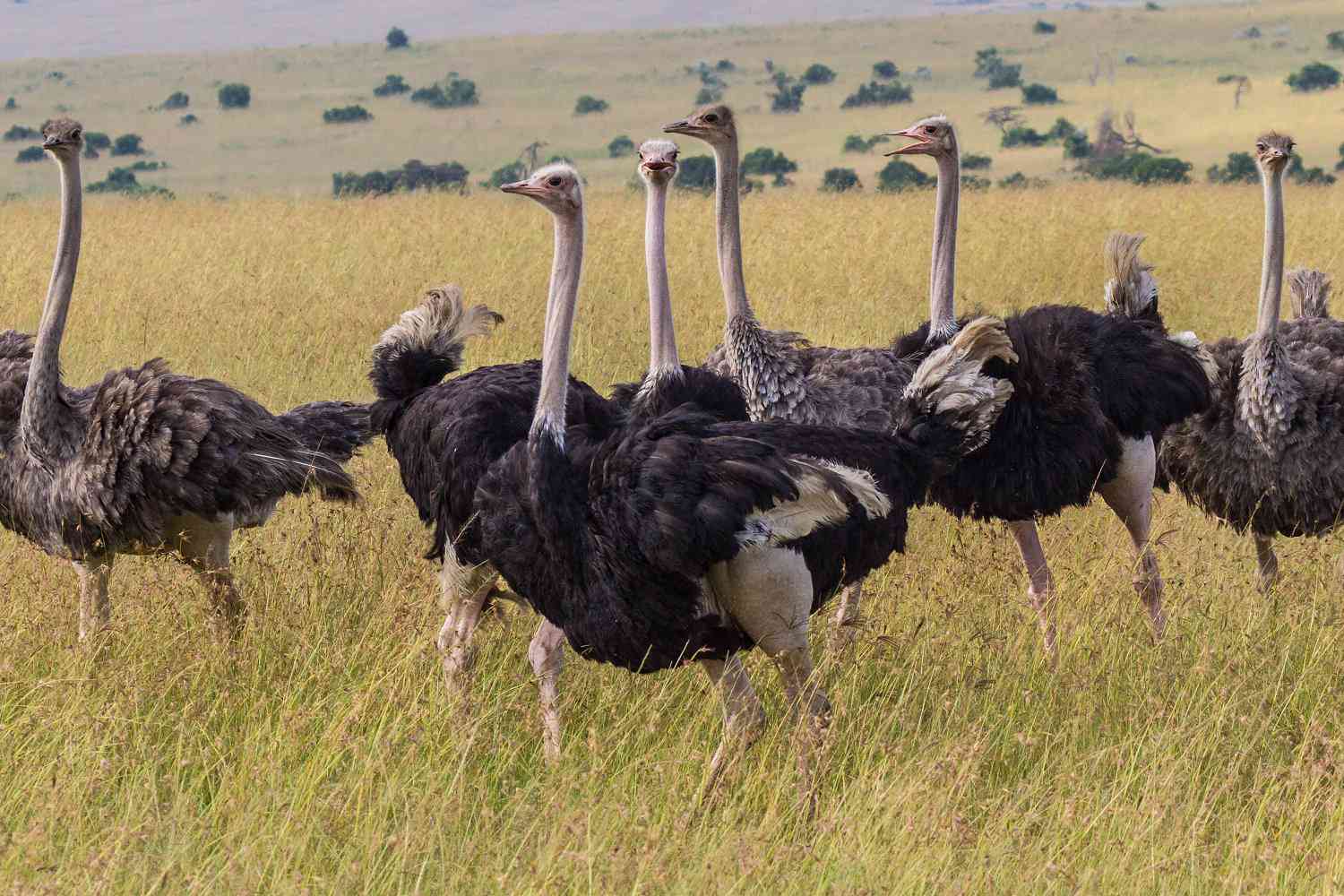
35 interesting facts about ostriches
- 👁️ 251
Ostriches, the largest and heaviest birds on the planet, offer a fascinating glimpse into the world of avian giants. Native to Africa, these remarkable creatures have adapted to a variety of habitats, from savannas to deserts, showcasing their resilience and unique biology. Unlike other birds, ostriches are flightless, relying on their incredible speed and powerful legs for mobility and defense. Their distinct appearance, behavior, and evolutionary history make ostriches a subject of interest and study around the world. Here are 35 interesting and informative facts about ostriches that highlight their unique characteristics and importance in the natural world.
- Ostriches are the world’s largest birds, capable of reaching heights of up to 9 feet (2.7 meters).
- They are also the heaviest birds, with some males weighing over 330 pounds (150 kilograms).
- Ostriches have the largest eyes of any land animal, measuring about 2 inches (5 centimeters) in diameter.
- They are flightless birds, with small wings relative to their body size.
- Ostriches can run at speeds of up to 45 miles per hour (72 kilometers per hour), making them the fastest two-legged animals on land.
- An ostrich’s stride can cover up to 16 feet (4.9 meters) in a single step when running.
- Their diet primarily consists of plants, though they also consume insects, lizards, and other small creatures.
- Ostriches are known to swallow small pebbles and sand, which help grind food in their gizzard, a specialized stomach for digestion.
- A group of ostriches is called a herd or flock.
- The ostrich is the only bird that has two toes on each foot, with the large toe bearing a significant resemblance to a hoof.
- Ostriches have powerful legs, which they can use as weapons, capable of delivering a kick strong enough to kill a lion.
- Female ostriches lay the largest eggs of any living land animal, with each egg weighing approximately 3 pounds (1.4 kilograms).
- The incubation period for an ostrich egg is around 40 to 45 days, among the longest for any bird.
- Ostriches do not bury their heads in the sand; this is a myth. They lie low and press their heads to the ground when threatened.
- They have a lifespan of up to 40 to 45 years in the wild and even longer in captivity.
- Ostrich feathers are unique among birds because they lack the hooklets that zip the feathers together, giving them a fluffy appearance.
- Males are typically larger than females and have black and white plumage, whereas females are mostly brown.
- Ostriches can tolerate a range of temperatures and can thrive in environments with extreme heat.
- Their vocalizations include a lion-like roar and a hissing sound.
- Ostriches have a communal nesting system where several females lay their eggs in a single, large nest.
- The alpha female’s eggs are placed in the center of the nest, where the temperature is most consistent.
- Ostrich farming is a significant industry in some parts of the world, with the birds being raised for their meat, feathers, and leather.
- An ostrich’s brain is smaller than either of its eyeballs.
- Despite their size, ostriches have been known to swim.
- The scientific name for the ostrich is Struthio camelus.
- Ostriches have a high red blood cell count, which aids in oxygen delivery to their muscles during high-speed runs.
- Their closest living relatives are the kiwis, emus, and other flightless birds, collectively known as ratites.
- The male ostrich is responsible for the majority of egg incubation and night-time nest guarding.
- Ostriches can go without water for several days, getting moisture from the plants they eat.
- They have a unique mating dance involving wing flapping and leg kicking.
- Fossil records indicate that ancient relatives of modern ostriches once roamed across Asia and Europe.
- Ostrich leather is considered one of the finest and most durable leathers available.
- Wild ostrich populations are primarily found in African savannas, grasslands, and semi-arid regions.
- The global population of wild ostriches has declined due to hunting and habitat loss.
- Conservation efforts are in place in several regions to protect and preserve wild ostrich populations.
Ostriches are truly remarkable birds that defy the conventional characteristics associated with avian species. Their ability to adapt to diverse environmental conditions, combined with their unique physical and behavioral traits, makes them a fascinating subject of study. Ostriches remind us of the incredible diversity of life on Earth and the importance of conservation efforts to protect such magnificent creatures for future generations to admire and learn from.
Ostriches, the largest and heaviest birds on the planet, offer a fascinating glimpse into the world of avian giants. Native to Africa, these remarkable creatures have adapted to a variety of habitats, from savannas to deserts, showcasing their resilience and unique biology. Unlike other birds, ostriches are flightless, relying on…